Archaeology & History
10 Shipwrecks Are Found Off the Coast of a Far-Flung Greek Island
A long endeavor to map the seas around Kasos has located shipwrecks dating back to 3,000 B.C.E.
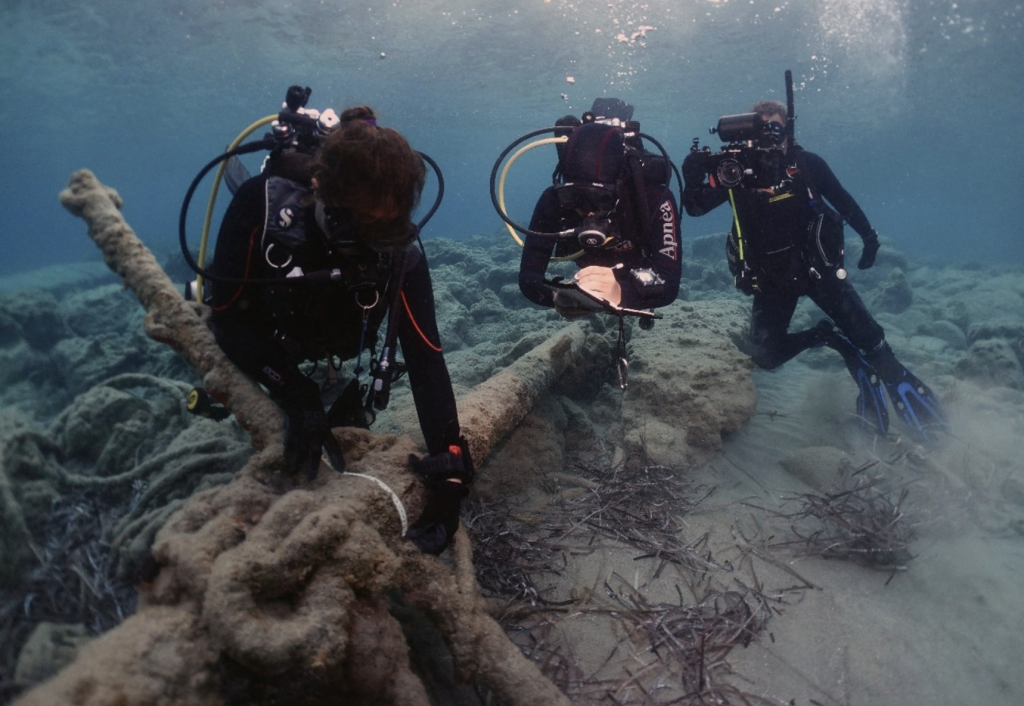
The first-ever underwater inquiry into the far-flung Greek island of Kasos concluded after four years last October—and the results are in.
The Greek Ministry of Culture has announced that an international, interdisciplinary team of researchers documented 10 total shipwrecks dating from 3,000 B.C.E. through last century at depths of 20 to 47 meters. Although it appears that none of the vessels were brought back to land, researchers did snap 20,000 underwater photos to further explore their remains. In addition to generating such materials for future study, the project aimed to emphasize that locals working with the waters, such as fishermen and divers, participate in the long history of Kasos’s seas.
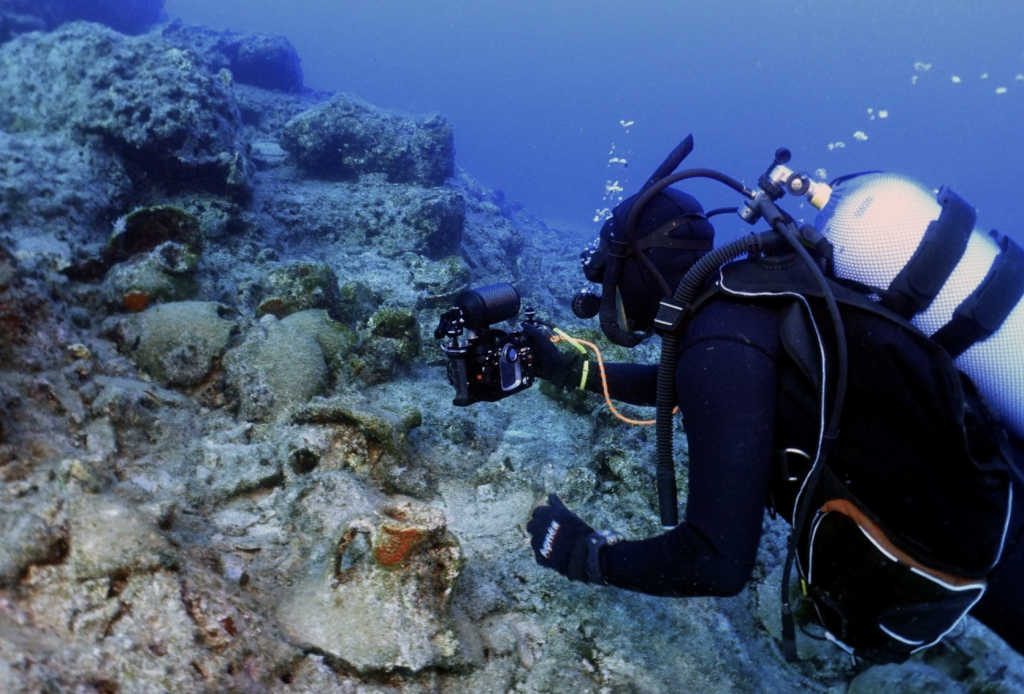
A diver documenting archeological remains. Courtesy of the Greek Ministry of Culture
Accounts of Kasos from Homer’s Iliad guided the team’s search. This southernmost island in the Dodecanese complex totals 49 square kilometers, characterized mostly by stony mountains and beaches. Seafaring Phoenician merchants sought shelter here, and Homer noted that Kasos contributed ships to the Trojan War.
“The middle of the Island is almost a plain, well planted with Olive trees, and Vine-yards; with all sorts of Fruits,” English merchant Bernard Randolph wrote in 1687. In the 18th century, French naturalist Charles Sigisbert Sonnini added that the wine and honey produced on Kasos are legendary.
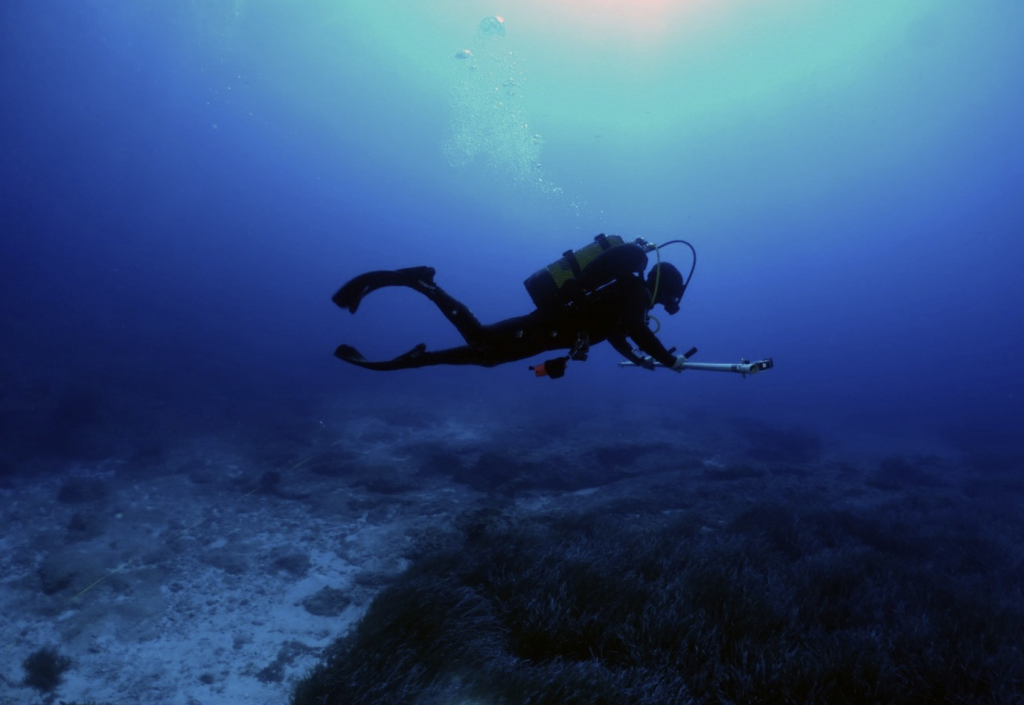
A diver exploring the sea. Courtesy of the Greek Ministry of Culture
The Kasos Maritime Archaeological Project’s website highlights the range of researchers involved in this collaborative project, organized by the National Hellenic Research Foundation (NHRF) and the Ephorate of Underwater Antiquities (EUA)—including archaeologists, conservators, engineers, surveyors, geologists, commercial divers, heritage managers, and historians.
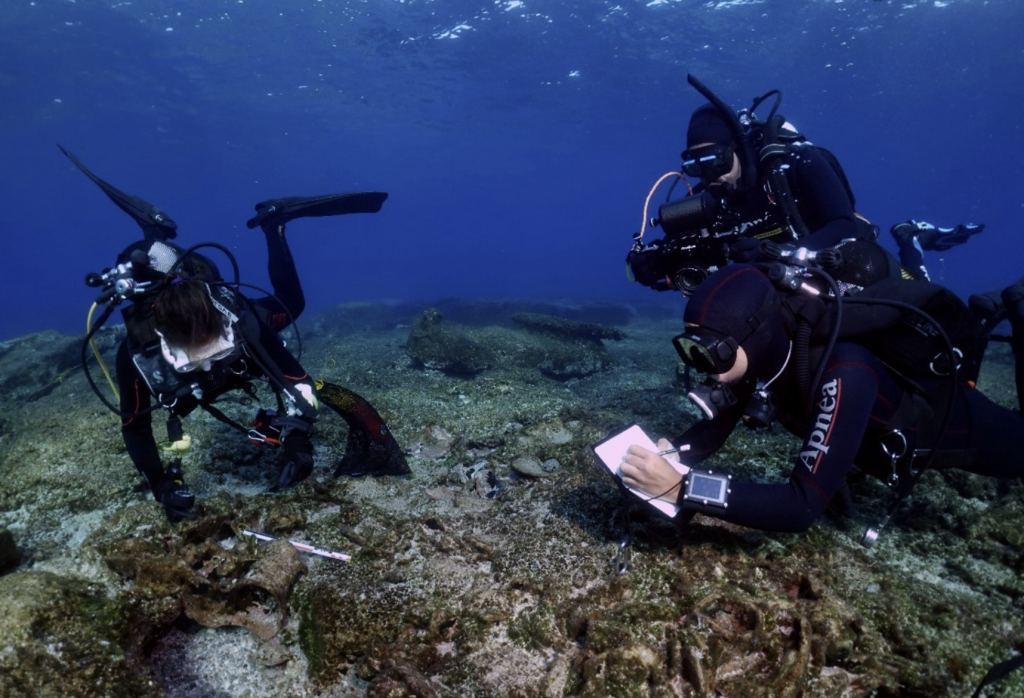
Researchers take notes underwater. Courtesy of the Greek Ministry of Culture
By 2021, that team’s “innovative and spherical approach” had turned up an ancient Roman shipwreck loaded with ceramic amphorae crafted in Spain and Tunisia that were once filled with oil, alongside 1st-century and 5th-century B.C.E shipwrecks and a modern boat made of wood and metal which was most likely sunk during World War II.
New additions from this week’s announcement include ancient ships bearing merchandise from Spain, Italy, Africa, and the coast of Asia Minor, the Greek Ministry of Culture reported, along with “important individual findings” such as a stone anchor hailing from the Archaic period and terra sigillata drinking vessels of African origin, from Roman times. Researchers also created the first-ever map of the Kasos-Karpathos reef and the Carpatholimnionas area using lateral scanning sonar.
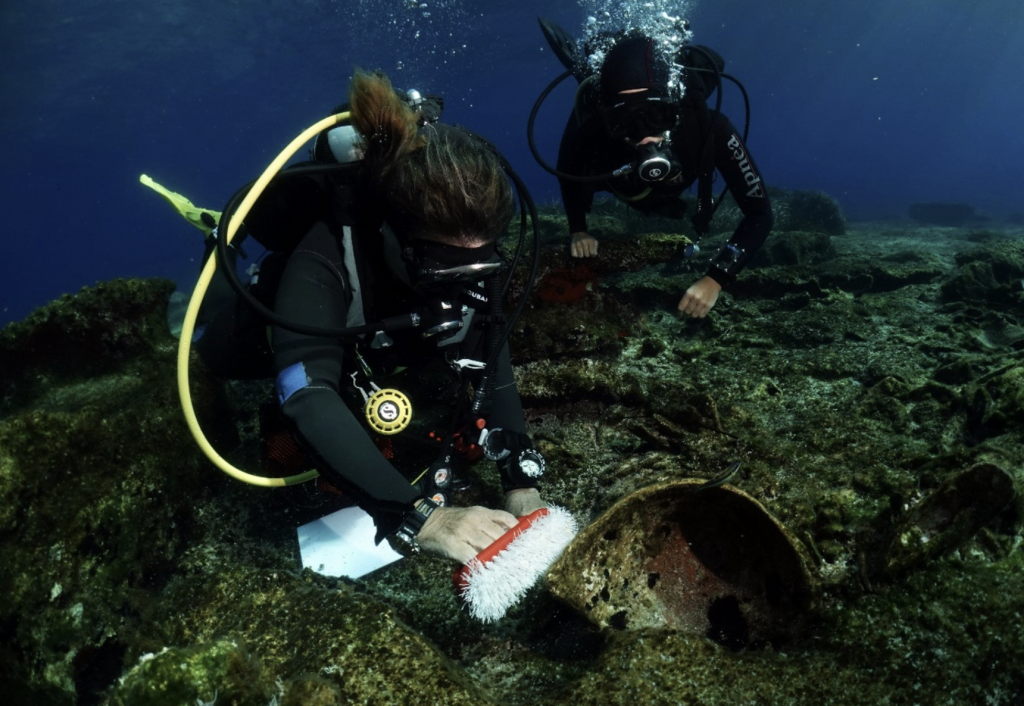
Researchers gently brush off a finding. Courtesy of the Greek Ministry of Culture
What’s more, the years of research have yielded an 11-minute documentary produced by AORI FILMS titled Diving in the History of the Aegean, which has been selected to compete at global archeological film gatherings like the Archaeology Channel International Film Festival in America and Firenze Archeofilm Festival in Italy.
And their work’s still not done. Next, researchers will analyze their findings alongside further context from historians, archaeologists, and conservators—and publish a full report through the National Research Foundation later this year. June will initiated a similar exploration into the sea around the nearby island of Karpathos.





